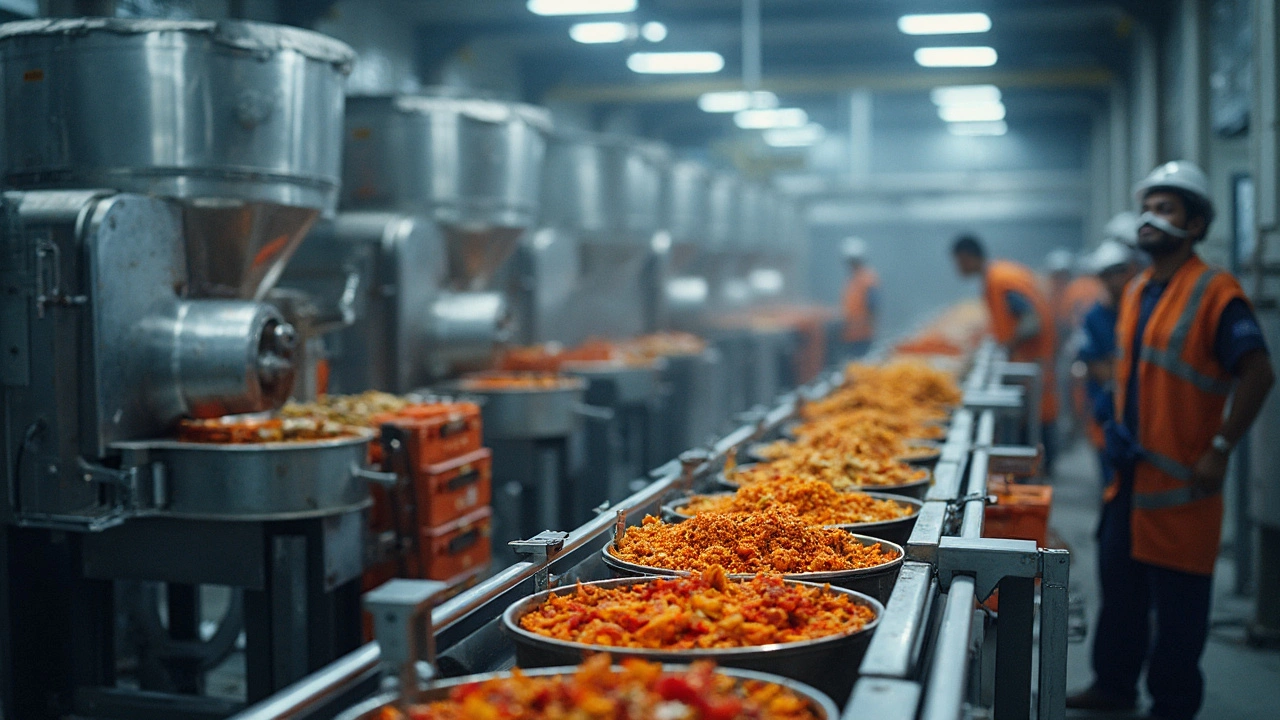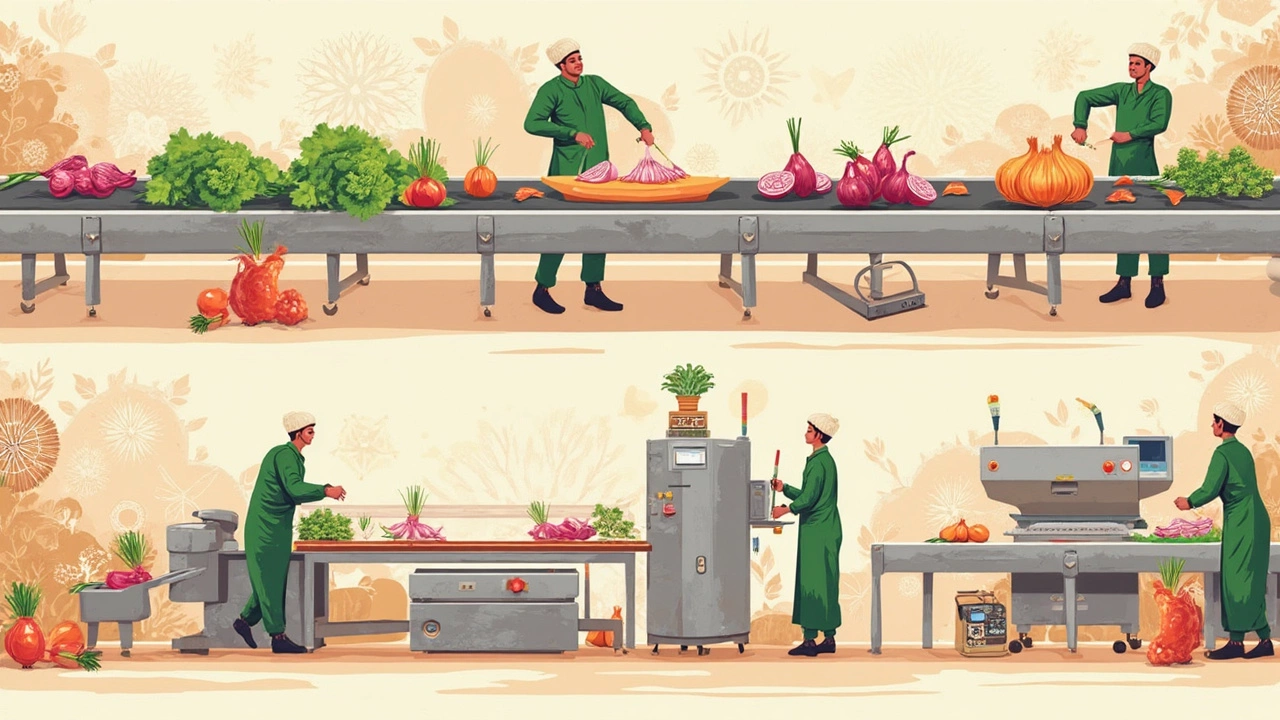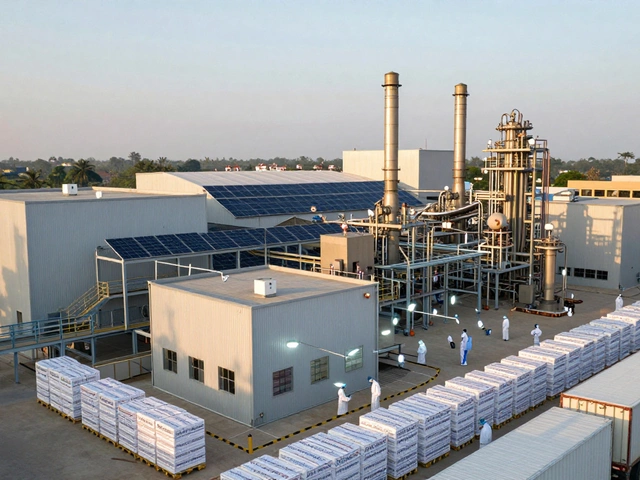
Ever wondered how that loaf of bread on your table goes from raw ingredients to a tasty morsel? Well, it’s all thanks to something called unit operations. These are the little steps in the grand dance of food production that ensure everything comes together just right. We're talking about processes like mixing, heating, cooling, and even packaging. Think of them as the building blocks or mini checkpoints that the food has to pass through. They work behind the scenes to make sure our food isn't just yummy but also safe and consistent.
Now, why should you care? Well, understanding these operations can give you a sneaky peek at why your favorite ice cream is always creamy and how that cereal always crunches just the right way. For food manufacturers, it's about efficiency and maintaining quality while meeting safety standards. So next time you munch on a snack, you’ll know there’s a whole science ensuring it hits the spot.
- What are Unit Operations?
- Key Stages in Food Production
- Importance of Unit Operations
- Practical Tips for Producers
What are Unit Operations?
So, here’s the skinny: unit operations are the individual processes that make up the whole food production journey. Imagine it as taking your favorite recipe and breaking it down into each step like chopping, mixing, boiling, and freezing. In the world of food processing, each of these steps is considered a unit operation.
Let’s dive deeper into what these operations mean. Essentially, they’re designed to transform raw ingredients into something consumable. Each step focuses on changing the physical or chemical state of the food. For instance, think about when you cook pasta. Boiling is an operation that changes the pasta from inedible to deliciously tender by applying heat and water.
Some key operations include:
- Mixing: Blending ingredients to ensure everything’s combined equally. Think of it like making a smoothie - fruits, yogurt, and milk all whirled together.
- Heating: Processes like pasteurization where heat is used to kill harmful bacteria, making products like milk safe to drink.
- Cooling: Essential for products like ice cream or for chilling cooked foods to prevent spoilage.
- Fermentation: This is where bacteria or yeast work their magic, often used in making bread or yogurt.
The beauty of these operations is that they’re universal across most types of food production. Whether it’s a tiny mom-and-pop bakery or a massive industrial plant churning out cereal, these steps tend to look pretty similar. It’s all about efficiency, consistency, and safety.
To get a sense of their importance, let's look at a simple example: bread-making.
| Unit Operation | Purpose |
|---|---|
| Mixing | Combine flour, water, yeast for dough formation. |
| Kneading | Develops gluten structure for texture. |
| Fermentation | Allows yeast to rise, creating airiness. |
| Baking | Cooked to transform into final bread product. |
By understanding these steps, you can appreciate the science behind the savory loaf you pick up from the store.
Key Stages in Food Production
Alright, let's break down how food makes its epic journey from raw materials to your plate. The magic happens in a sequence of steps known as unit operations, and these are the backbone of food production.
First up, we've got the mixing stage. This is where ingredients like flour, sugar, and spices are blended to consistency nirvana. Picture it like mixing cookies with the kids — you want an even spread of all the good stuff.
Next, we move to heating. Whether it’s baking that bread or boiling those veggies, precise temperatures are key to making sure everything turns out perfect — and safe to eat. Funny enough, that golden crust on your bread or the tenderness of a slow-cooked stew is a testament to this stage.
Cooling and freezing come next, especially important for foods that need a long shelf life like ice cream. It’s like the magic chill that turns ice cream from liquid gold to the scoopable delight you can't resist.
Now, we enter the packaging zone. Here, foods are wrapped up for freshness and safety. Think of the vacuum-sealed packets that keep your coffee fresh and ready to brew.
Let's not forget quality control. This is where testing happens to make sure everything meets safety standards and tastes just right. Imagine a team solely focused on ensuring that your chips have the perfect crunch.
To wrap it up, these stages ensure that food processing is efficient and that food production consistently delivers quality to meet consumer expectations. The success of each step is how snacks go from factory floors to family dinners, keeping the culinary circle of life spinning.

Importance of Unit Operations
So, why are unit operations such a big deal in food production? Imagine trying to whip up your favorite dish without following any steps—just tossing everything together and hoping for the best. Doesn’t sound too promising, right? Unit operations help prevent this culinary chaos by offering a clear, structured approach to processing food, ensuring both quality and safety.
In the food industry, consistency is key. No one wants their morning cereal to have more crunch today and turn into a soggy mess tomorrow. By breaking down the production process into smaller, manageable parts, unit operations guarantee that every bite tastes just like the last one. They lay down the blueprint for each stage, from raw ingredient handling to the final packaging.
But there's more to it. These operations are also crucial for efficiency. With each step fine-tuned to do its job right, manufacturers can make food faster and with less waste. This not only keeps costs in check but also minimizes the environmental footprint. Plus, incorporating technology like automation into these steps can further streamline the process, making it possible to produce larger quantities without compromising quality.
Let’s not forget about safety. Unit operations enforce strict hygiene and safety standards. Each piece of machinery and each step in the process is designed to minimize contamination risks, ensuring the food we eat is safe. Without these operations, maintaining high safety standards would be a nightmare.
Looking at the big picture, unit operations are like the unsung heroes in food processing, bringing order, speed, and safety to the table. They make sure that when you're craving your favorite snack, you’re getting the same great taste every time, without any unexpected surprises.
Practical Tips for Producers
Got your chef hat on and ready to dive into the world of food production? Here are some practical tips for harnessing the power of unit operations effectively.
First up, always focus on your batch size. It’s like deciding whether to make a small salad or a family-sized one. Adjust your operations to match your production scale. Larger batches might need different mixing times or even temperatures.
Next, keeping machinery in tip-top shape can’t be overstated. Regular maintenance checks ensure that processes like mixing and packaging run smoothly without hiccups. Imagine your car stalling in the middle of nowhere—that's exactly what a broken-down machine feels like during a busy production day.
Finally, employ data analytics. Use that info to fine-tune every unit operation. Whether you're analyzing heating times or packaging efficiencies, having solid data to back up decisions can make all the difference. Consider using a dashboard that provides real-time insights into how each operation is performing.
To give you an idea, here's a quick look at a crucial aspect: temperature control in food processing.
| Operation | Optimal Temperature (°C) |
|---|---|
| Mixing | 20-25 |
| Freezing | -18 to -20 |
Keep these tips in mind, and you'll be well on your way to mastering the art of food processing. Happy producing!




